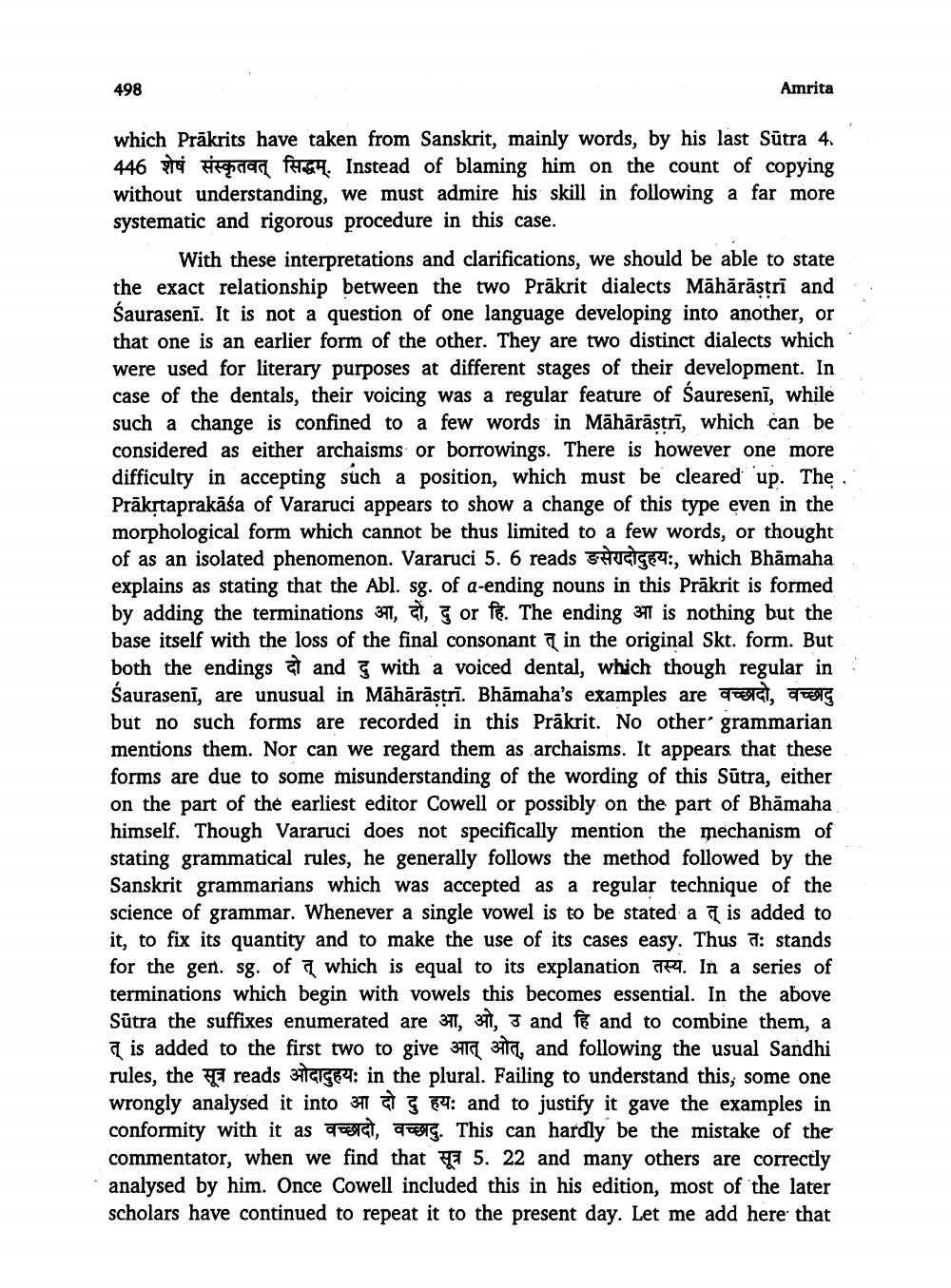________________
498
Amrita
which Prākrits have taken from Sanskrit, mainly words, by his last Sūtra 4. 446 T Hitac fHSH. Instead of blaming him on the count of copying without understanding, we must admire his skill in following a far more systematic and rigorous procedure in this case.
With these interpretations and clarifications, we should be able to state the exact relationship between the two Prākrit dialects Māhārāstrī and Saurasenī. It is not a question of one language developing into another, or that one is an earlier form of the other. They are two distinct dialects which were used for literary purposes at different stages of their development. In case of the dentals, their voicing was a regular feature of Sauresenī, while such a change is confined to a few words in Māhārāstrī, which can be considered as either archaisms or borrowings. There is however one more difficulty in accepting such a position, which must be cleared up. The Prākstaprakāśa of Vararuci appears to show a change of this type even in the morphological form which cannot be thus limited to a few words, or thought of as an isolated phenomenon. Vararuci 5. 6 reads SHRUGIGE4:, which Bhāmaha explains as stating that the Abl. sg. of a-ending nouns in this Prākrit is formed by adding the terminations 341, ai, į or fe. The ending 371 is nothing but the base itself with the loss of the final consonant 7 in the original Skt. form. But both the endings and with a voiced dental, which though regular in Saurasenī, are unusual in Māhārāstrī. Bhämaha's examples are GI, Torg but no such forms are recorded in this Prākrit. No other grammarian mentions them. Nor can we regard them as archaisms. It appears that these forms are due to some misunderstanding of the wording of this Sūtra, either on the part of the earliest editor Cowell or possibly on the part of Bhāmaha himself. Though Vararuci does not specifically mention the mechanism of stating grammatical rules, he generally follows the method followed by the Sanskrit grammarians which was accepted as a regular technique of the science of grammar. Whenever a single vowel is to be stated a 7 is added to it, to fix its quantity and to make the use of its cases easy. Thus 7: stands for the gen. sg. of 7 which is equal to its explanation RT. In a series of terminations which begin with vowels this becomes essential. In the above Sūtra the suffixes enumerated are 371, 371, 3 and fe and to combine them, a
is added to the first two to give 34776 ATCL, and following the usual Sandhi rules, the reads 3116ige: in the plural. Failing to understand this, some one wrongly analysed it into 37 g 64: and to justify it gave the examples in conformity with it as वच्छादो, वच्छादु. This can hardly be the mistake of the commentator, when we find that E 5. 22 and many others are correctly analysed by him. Once Cowell included this in his edition, most of the later scholars have continued to repeat it to the present day. Let me add here that




